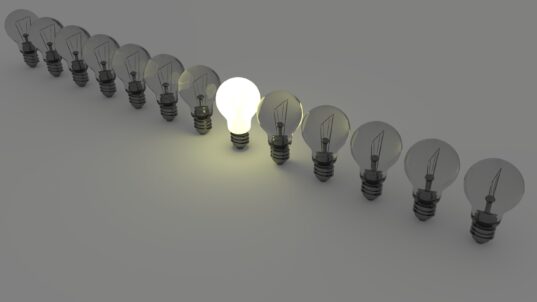
The Gleaners, by Jean-François Millet — Google Arts & Culture, Public Domain, via wikimedia
Each year, we tend to recognize new words that come into our vocabulary. Often these words reflect trends in pop culture and tend to be hip. (The Oxford Dictionary declared “rizz,” a shortening of “charisma,” to be 2023’s “word of the year”). What goes uncelebrated are words that have fallen out of use but should be very relevant today. One such word is gleaning.
Gleaning has early references in the Bible. In the books of Leviticus and Deuteronomy, farmers are urged to leave parts of their fields unharvested or leave behind any part of the field that was not originally harvested. These remains are called gleanings. The admonition is that the gleanings can then provide sustenance for those less fortunate. Rabbinic literature from the Jewish faith had similar admonitions.
In Europe, gleaning was given legal status. Church bells were used to designate when gleaning could start and end. While gleaning was an established practice, it was one that remained hidden from the consciousness of the upper class.
In 1857, artist Jean-Francois Millet completed a painting called The Gleaners as shown above. Millet presented his painting at the Salon, a government sponsored exhibition of works of art to considerable negative criticism. French society was uncomfortable with the depiction of poverty. The three women stooped over picking up the remains of a wheat harvest was a painful reminder that not everyone was prospering. The size of the painting, nearly 3-feet by 4-feet, was also criticized since that size of painting was normally reserved for religious images. For artists, gleaning became a popular theme for their paintings, setting a trend of art conveying a social message.
The act of gleaning remains with us today as a way to provide for those for whom food security is a matter of survival. Supermarkets and restaurants are encouraged to provide food that would go to waste to those who have limited resources for food. Volunteers also are provided access to fields to collect crops for food banks. The USDA offers a number of resources that could be helpful for gleaning programs.
Just imagine the world we could build if we recommitted ourselves to restoring the practice of gleaning on a large scale. Why do you suppose so few of us know the original significance of the word gleaning? Perhaps, like the original audience Millet’s painting, we don’t want to be reminded that there are those going hungry in our society. Or maybe we feel guilty about the food we have in our refrigerators and pantries going to waste. How would we receive art in today’s society if it depicted children digging through dumpsters for food?
What if we contribute to making a world where words like “gleaning” become popular again because we are all looking out for each other? It’s time that “gleaning” becomes a word that is recognized by all as a call for developing a culture of humanitarianism.
* * *
“When you reap the harvest of your land, you shall not reap to the very edges of your field or gather the gleanings of your harvest.You shall not strip your vineyard bare or gather the fallen grapes of your vineyard; you shall leave them for the poor and the alien: I am the Lord your God”.—Leviticus 19:9-10
This is part of our “Just Imagine” series of occasional posts, inviting you to join us in imagining positive possibilities for a citizen-centered democracy.



